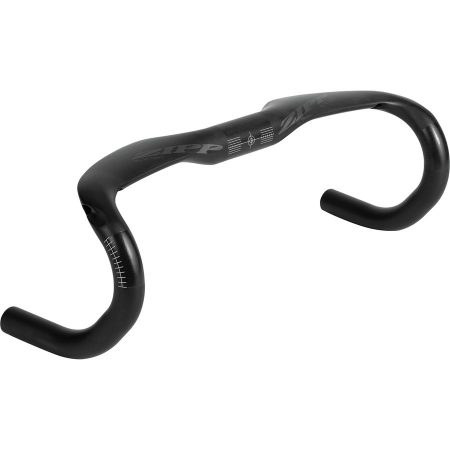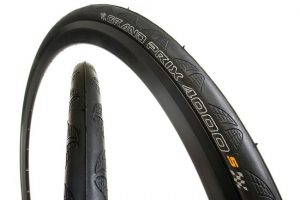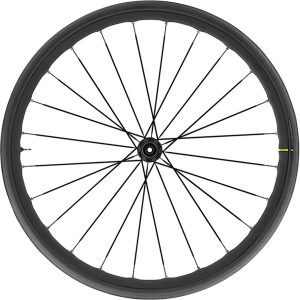Von Collins is an accomplished triathlete and endurance cyclist, and the author of four fitness and training books: Smarter Running, Your First Triathlon Guide, Fit Foods, and 30 Rut-Busting Workouts. He has been cited as a triathlon, cycling, and fitness expert by Healthline, CNET, Forbes, Eat This, Not That and other major outlets.
Many cyclists add upgrades to their bikes — usually in the form of higher-quality parts than what came stock with the original bike. Some of these upgrades are well worth it, while others are just a smokescreen and a way to get you to spend money you don’t need to spend.
Which upgrades are worthwhile, and which are not? We are going to answer that question for you. Note that while this piece was written with a road bike in mind, the concepts will definitely apply to triathlon bikes, gravel bikes, and in some cases even mountain bikes or fat bikes.
Get your ride up on your mechanic bike stand (we endorse the Park Tool bike stands) and get to work!
Upgrade Your Bike’s Touch Points
Upgrades split two ways: those the rider interacts with, and those they do not. The former can be described as “touch points” or “cockpit” components, plus saddles and pedals. However, the categories are more of a sliding scale than a hard line: crank length, for instance, can significantly change the way a bike fits and feels to the rider. Gear sizes can also make a big difference in the interaction between rider and bike by changing pedaling rates across the board.
Aerodynamically-focused riders like triathletes and road racers change components and even frames in pursuit of lower drag, and it’s easy to lose track of efficiency in the process.
Adopting a tucked-in riding position to reduce drag by 5 watts is a false economy if the awkward contortions restrict pedaling power by 10 watts. Typically, the differences in power a rider achieves between a properly fitting bike and one their body fights against far outstrip any recent drivetrain innovation.

That’s why our number one upgrade is a well-done bike fit by a qualified fitter, often times the type of trained person you will need to book an appointment with at a local bike shop. These bike-tweaking specialists straddle the lines between mechanic, coach and physical therapist. A trusted professional in any of those areas can help connect you with a fitter: it’s common that a fitter will wear one or more of those hats, too. Expect to be carefully observed or even filmed while pedaling to identify any potential hiccups, such as range-of-motion restrictions or other evidence of injury. If the appeal of upgrades is retail therapy, don’t worry: your fitter’s suggestions are likely to involve at least some change to components like stem or saddle.
When it comes to bike pedals, they can actually make quite a difference. If you are thoughtful about matching the type of pedal and cleat to your style of riding, you might find it a worthwhile upgrade. In addition to a good pedal being lighter while providing more platform area for power transmission, there is a convenience factor of finding a pedal that allows for a more forgiving clip-in and clip-out.
Touch Point Upgrades to Consider:
- Zipp Handlebars. Improve your handlebars with a more ergonomic drop bar. We love the Zipp SL-70 handlebars, which give you a great feel both in the upright and aero positions. A very slight flare on the drops makes being down in the saddle feel a bit more comfortable. They come in both aluminum and carbon. You can find them here.
- If you are considering ditching your stock pedals, consider a pedal-based powermeter to hit two birds with one stone. Pedal quality and comfort is very good, plus you get a power meter out of the deal. It will double your cost, but for many will be worth it. Check out our piece on pedal-based power meters for more.
Note that when it comes to touchpoints, you can’t upgrade your way out of a poorly-fitting bike frame. Sure, you can do some small modifications to the seat post or stem, but a wrong fit is a wrong fit. When buying a bike, be sure to size it right from the beginning. Reference a bike size chart, and when in doubt, get advice from a professional bike fitter.
Upgrade Your Bike’s Tires
If you have read our bike tire buyer’s guides, you know the huge variety of shapes, sizes and constructions that can make tire shopping a confusing affair. Check out the detailed guides for the specifics, but for now there’s one key takeaway: tires are a BIG deal. Any bike, from aerodynamic triathlon machine to slow but unstoppable fat bike, can only go as far or as fast as its tires allow. The wrong tire can cause greater drag than any drivetrain part, and of course a flat tire can be a race-ending and soul-crushing calamity.
Tires are a classic “pick two of three” scenario: performance, cost, and weight all vary with tire style and construction. Flimsy tires can make for cheap speed but risk easy flats; extra rubber is an inexpensive but heavy way to keep flats at bay; and for a price, high-tech materials like kevlar give superb protection at modest weights or allow race-weight tires to resist some punctures. Off-road tires offer a wide range of tread patterns but follow the same rules: lightweight cross-country tires will offer basic or flat-resistance premium casings, while burly downhill tires give maximum protection with upgrade options for reduced weight.
Upgrading tires can be a case of spending smarter, not spending harder: why subject lightweight, high tech performance tires to the punishment of road training when you’re after progress, not times? Even worse, why bring extra weight to race day for the sake of a tire that survives construction zones? Remember that an inexpensive tire can be a strong performer, either in speed or durability. Two pairs of good tires can sometimes provide better results at a lower price than just one set of expensive tires to do it all. Likewise, smart spending on tires isn’t limited to the tires themselves, per se. The time or money to change tires more often can be an investment, and some cyclists will buy additional wheelsets to quickly swap between tire types, even before realizing any potential gains from the wheels themselves. Speaking of which… We talk about wheels next.
Tire Upgrades to Consider:
- Continental Grand Prix Tire. We featured it here in our tire guide, but the Conti Grand Prix is a good all-around tire that very well may be superior to whatever came stock on your bike. The model numbers are always changing as they improve, so just get whatever is top-of-the-line.
Upgrade Your Bike’s Wheels
Wheels have huge upgrade potential, and not just because they are next closest to the ground. True, a bad wheel can stop a rider in their tracks, but gone are the days that good quality wheels are an exclusively hand-built luxury. Better quality spokes and advanced wheel building machines mean that new bikes typically roll off the factory and showroom floor with a usable wheelset. Some brands will spec high end wheel options as a way to share their purchasing power and savings with their most discerning customers. Availability and popularity on the aftermarket are a good way to tell if a wheelset is an upgrade: even wheels which trade under house brands can be appealing upgrades to owners of any brand bike, but can appear deceptively similar to basic wheels sold only with the bikes they are equipped to.
High end wheels for road, triathlon, and time trial bikes evoke complex carbon fiber rims, a sparse few airfoil-shaped spokes and featherweight, skeletal hubs. Beyond looks, smart shopping means understanding why wheels look they way they do. Three factors generally make up wheel performance: weight, aerodynamics, and mechanical drag. High-end wheels typically claim benefits in all three areas. However, keen readers might notice a theme: trade-offs and compromises exist in wheels, just like tires.
Aerodynamic wheels tend to have taller rims, often referred to as “deep-section” or sometimes just as “aero.” At the extreme end, a disc wheel has a continuous structure called a “fairing” with no spokes exposed at all. The existence of spokes is a strong clue of the drawbacks: deeper rims use more material and are heavier, even accounting for shorter spokes. Disc wheels also typically feature only in the rear of bikes ridden outdoors, because of the risk that catching wind like a sail could make a front, steering disc wheel hazardous and negate any aerodynamic benefits. The same principle applies to deep-section wheels, with deeper rims increasing the hazards and aerodynamic consequences of cross-winds.

This simple explanation of aerodynamics conflicts with the marketing copy and technical claims of many aerodynamic wheels. New designs claim to absolve deep-section rims of their limitations through everything from elaborate saw-tooth shapes to golf-ball-like dimples. It’s hard to say if these claims are true, for the same reason it is hard to say they are false: watt figures or percentages mean little without context, and the majority of people with advanced testing or modeling ability are already occupied using those tools to sell something. That means we recommend the same approach here as with tires: know the benefits and drawbacks, invest in equipment tailored to your riding, and don’t be afraid to swap gear based on conditions.
Any reputable wheel brand should provide decent value for the money, but remember that if something sounds too good to be true, it probably is! Wheels are a particular hotspot not just for off-brands of questionable quality, but even for outright counterfeiting. Exercise caution, since the faster a wheel spins the more dangerous an unexpected failure becomes.
Wheel Upgrade to Consider:
- Mavic’s Ksyrium wheelset is a popular wheel to upgrade to. There is a good chance that is it lighter and stronger than the wheel that came stock on your bike, but it also doesn’t break the bank. It has been around for a while, and is almost legendary status in the mid-tier wheelset price point. Find it here.
This brings us to some good news and bad news. The good: most of the available upgrades not yet mentioned are perfectly safe. Some are stunningly well-made, with a higher level of quality and finish than the original parts they replace. The bad: some upgrades check each of these boxes but skip other important questions. The Red Herring award goes to an upgrade with such extreme cost and modest potential that it’s best left as the last priority.
Don’t Bother with Ceramic Bearing Upgrades
Some readers may want to take this news sitting down, but let’s get right to the point: ceramic bearings are not meaningfully better than steel in bicycle applications. There are plenty of claims to question, but ceramic bearings rely on one fundamentally misunderstood phenomenon: friction. Many cyclists have seen a pair of identical cranks or wheels, one with steel bearings and one with ceramic. A demonstrator spins the steel bearing piece and the stickiness and friction is obvious, while its ceramic bearing neighbor seems to spin effortlessly. How could this powerful demonstration be deceptive?

In short, ceramic bearings focus the conversation on bearings themselves. Little round balls frantically spinning against a raceway certainly generate friction: assuming forces stay the same between bearings, their friction depends on the quality of the bearings and raceways, the size of the bearings, and anything else which might get in their way. The latter might imply some kind of contamination or nasty grit at first, but in fact something always gets in the way of bearings: lubrication! Whether oil or grease, bearings spin and swim their way through, and the churning friction developed is an overwhelming component of overall friction. Most bearings are packed with a relatively viscous grease which balances performance with water resistance and longevity. Replace this grease with a thin, light alternative and presto, watch it spin! At least, until it sees grit and water from a real-life road, or heat from long mile after long mile.
The balance between durability and efficiency doesn’t end with lubricant. Seals are critical for bearing life but rub away the entire time a bearing spins. Tighter seals rub more and seal better, while looser seals lower friction but offer far less protection to the bearings inside. Some readers will have already guessed, but yes: seals have a much greater impact on bearing friction than bearing quality or composition, and potentially greater than lubricant as well. Taken together, the impressive demo of ceramic versus steel ball bearings could be nothing more than a demonstration of light seals and lubricant versus heavy duty waterproofing: in fact, there’s no way to tell if expensive ceramics are even present.







